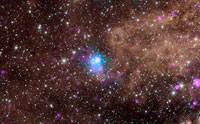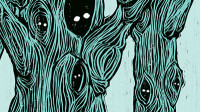By Creation Moments Most of us know that a plant under stress is more likely to have problems with insects. If a plant is dry, for example, we water it, hoping it will regain its health and stand strong against insect attacks. read more …read more Read more here: Creation Moments
By radio@answersingenesis.org (Steve Ham) …read more Read more here: Answers Conversation
AiG is experiencing the same sort of angry opposition to the Ark Encounter as Nehemiah did in rebuilding the wall around Jerusalem. …read more Read more here: AIG Daily
Despite saturation presentation of evolution as fact in the classroom and by the media, a significant percentage of people still want to hear about alternatives such as creation. …read more Read more here: creation.com
By Creation Moments If man is the result of billions of years of evolution from the simplest of creatures, evolution predicts that man should have retained most, if not all, of the best abilities of those other creatures in his heritage. read more …read more Read more here: Creation Moments
Eastern box turtles can literally be “frozen alive” and emerge unharmed. …read more Read more here: AIG Daily
Astronomers recently detected evidence of possible comets orbiting a faraway star system named ? Pictoris. They compared what they saw to what our solar system may have looked like billions of years ago when the earth and moon were supposedly forming out of a chaotic debris cloud. But details from their report easily refute this imagined “planetary-system formation,” and instead illustrate how God recently and uniquely created space objects. More… …read more Read more here: icr.org
By Ken Ham When Christians publicly take a stand on moral issues, such as homosexual behavior and gay marriage, they are often accused of being judgmental. Well, the famous country singer Dolly Parton used this argument recently in an interview with Billboard. She was asked, “Dollywood attracts lots of church groups, but it has also become a draw for the LGBT community. What does that say about you?” In reply she stated, “It’s a place for entertainment, a place for all families, period. It’s for all that. But as far as the Christians, if people want to pass judgment, they’re [More]
By Creation Moments Completely unrelated creatures that depend entirely upon one another to live and have no way of living without one another pose a very serious challenge to those who claim that all living things evolved. The relationship is called reciprocal altruism. read more …read more Read more here: Creation Moments
Almost all Americans have heard the phrase “separation of church and state.” However, fewer realize the phrase is not in the Constitution. …read more Read more here: AIG Daily
Mormon founder Joseph Smith taught a very different understanding of our origins to the Genesis account of Creation. …read more Read more here: creation.com
The design in the complex movements of plants is obvious. …read more Read more here: creation.com
Censorship of those who advocate truth has gone on since the dawn of humanity, but the values of the Council of Europe take this to a new level, claiming that creationists threaten human rights! …read more Read more here: creation.com
By Creation Moments Have you ever wondered why it is that ducks can spend all day in near-freezing water, and it doesn’t seem to bother them? For that matter, birds never seem to be bothered about cold feet. If we ran around in the ice and snow with bare feet, it wouldn’t be very long before we had a good case of frostbite. So why don’t birds need socks? read more …read more Read more here: Creation Moments
By Ken Ham We’re excited to announce the re-release of the two-book set by AiG’s own Dr. Andrew Snelling, Earth’s Catastrophic Past. This work is an update and follow-up to the classic The Genesis Flood by Dr. Henry Morris, and it’s a must-have for every serious student of Genesis. And until November 30, we have a special social media only offer: If you buy Earth‘s Catastrophic Past from our online store for $59.99, you will automatically receive Dr. Snelling’s five-DVD geology set for free (that’s a $49.99 value)! This exciting offer is available exclusively through our online bookstore at <a [More]
Stephen Meyer’s assessment of the facts regarding the ‘Cambrian Explosion’ is a devastating exposé of further fatal flaws in the Darwinian dogma. …read more Read more here: creation.com
By Ken Ham Bill Nye’s new book Undeniable: Evolution and the Science of Creation combines Nye’s false claim that biblical young-earth creation is dangerously unscientific with his equally false claim that the foundation of all science is evolution. He asserts that all scientific curiosity and progress depends on the acceptance of molecules-to-man evolution. Although scientific models grounded in biblical history have been the basis for countless solid scientific predictions, Bill Nye goes so far as to say, “How did we let an ideological resistance to inquiry become such a prominent part of our society?” (p. 17). He fails to see [More]
What are the odds that life somehow self-generated? Many experiments have shown that the likelihood of just the right chemicals combining by chance to form even the simplest cell on Earth is so close to zero that some origin-of-life researchers have punted the possibility to some distant unknown planet. But a new study of gamma-ray burst frequency estimates has eliminated the possibility of life on other planets. More… …read more Read more here: icr.org
By Creation Moments Whenever water is in contact with air, one of the most delicate structures in the universe is created. That structure is called surface tension. Surface tension is created because water molecules touching the air move just a little bit closer to one another, forming a delicate “skin” on the water. read more …read more Read more here: Creation Moments
This second installment is a continuation of my response to a recent critical paper (Jeanson 2013) on a series of Acts & Facts articles. …read more Read more here: AIG Daily
This paper responds to a 2013 Jeanson paper critical of a series of Acts & Facts articles published by the Institute for Creation Research (ICR). …read more Read more here: AIG Daily
By Ken Ham A recent news article boldly proclaims, “It’s Official: Religion Doesn’t Make You More Moral.” The article claims that “a recent study in Science aimed at uncovering how we experience morality in our everyday lives suggests that religious people are no more moral—or immoral—than non-religious people.” The open-ended study relied on self-evaluation from its 1,200 participants to determine how people view morality in their everyday lives. Now, it’s important to note, as one of our researchers shared with me, that self-evaluations are often unreliable and such studies are hardly concrete. Of course, the results also depend on …read [More]
Catastrophically buried during Noah’s Flood. …read more Read more here: creation.com
What do you think about ghosts? If we look to the Scriptures, we find solid answers, even on this murky subject. …read more Read more here: AIG Daily
The occult needs to be opposed because it is based on the denial that there is a Creator and we are His creatures. …read more Read more here: creation.com
The worldwide ministry of AiG is witnessing a global hunger for truth, and we have been increasing our efforts to respond in many ways. …read more Read more here: AIG Daily
By Ken Ham Recently blogger Mike Lehman wrote about “4 Things Bill Nye Should Have Said to Ken Ham.” He states that Bill Nye “The Science Guy’s” approach during our debate in February was a disappointment to him. He argues that Mr. Nye should have taken a different angle and, instead of addressing so much “science” (or what should be called “historical science”—unobservable, unrepeatable, and untestable assertions about the past), he should have focused on my “underlying assumptions.” He then goes on to state four things that Bill Nye should have addressed. 1. “Young-earth creationism is, uh, young.” The first [More]











































